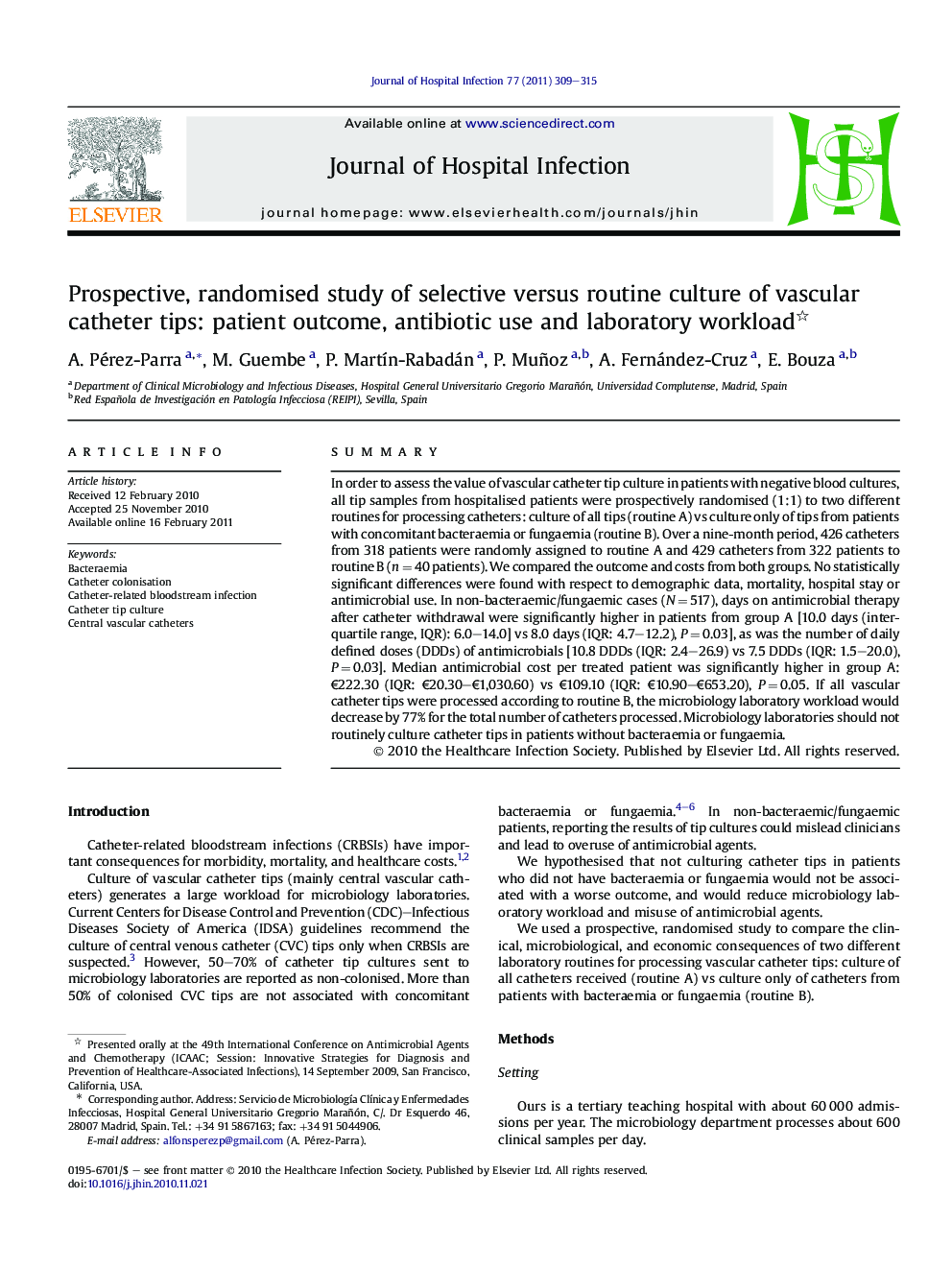| Article ID | Journal | Published Year | Pages | File Type |
|---|---|---|---|---|
| 3372266 | Journal of Hospital Infection | 2011 | 7 Pages |
Abstract
In order to assess the value of vascular catheter tip culture in patients with negative blood cultures, all tip samples from hospitalised patients were prospectively randomised (1:1) to two different routines for processing catheters: culture of all tips (routine A) vs culture only of tips from patients with concomitant bacteraemia or fungaemia (routine B). Over a nine-month period, 426 catheters from 318 patients were randomly assigned to routine A and 429 catheters from 322 patients to routine B (n = 40 patients). We compared the outcome and costs from both groups. No statistically significant differences were found with respect to demographic data, mortality, hospital stay or antimicrobial use. In non-bacteraemic/fungaemic cases (N = 517), days on antimicrobial therapy after catheter withdrawal were significantly higher in patients from group A [10.0 days (interquartile range, IQR): 6.0-14.0] vs 8.0 days (IQR: 4.7-12.2), P = 0.03], as was the number of daily defined doses (DDDs) of antimicrobials [10.8 DDDs (IQR: 2.4-26.9) vs 7.5 DDDs (IQR: 1.5-20.0), P = 0.03]. Median antimicrobial cost per treated patient was significantly higher in group A: â¬222.30 (IQR: â¬20.30-â¬1,030.60) vs â¬109.10 (IQR: â¬10.90-â¬653.20), P = 0.05. If all vascular catheter tips were processed according to routine B, the microbiology laboratory workload would decrease by 77% for the total number of catheters processed. Microbiology laboratories should not routinely culture catheter tips in patients without bacteraemia or fungaemia.
Related Topics
Life Sciences
Immunology and Microbiology
Applied Microbiology and Biotechnology
Authors
A. Pérez-Parra, M. Guembe, P. MartÃn-Rabadán, P. Muñoz, A. Fernández-Cruz, E. Bouza,
